Over the last few years I have been asked many times about how I take my night shots. Mostly if it depends on the camera, the settings, the lenses and what not. Usually I don’t really answer the question. Because there is no real definitive answer.

What I can talk about is how I started out and what has become of my view of the night sky and night vision.
It’s easy to say that everything depends on the camera. Sure, lots of possibilities depend on the camera, but that is not all. When I lived in Kiev, Ukraine, my first digital camera was a small Nikon Coolpix. I still have it, it comes in handy in certain situations where a big camera is not allowed.
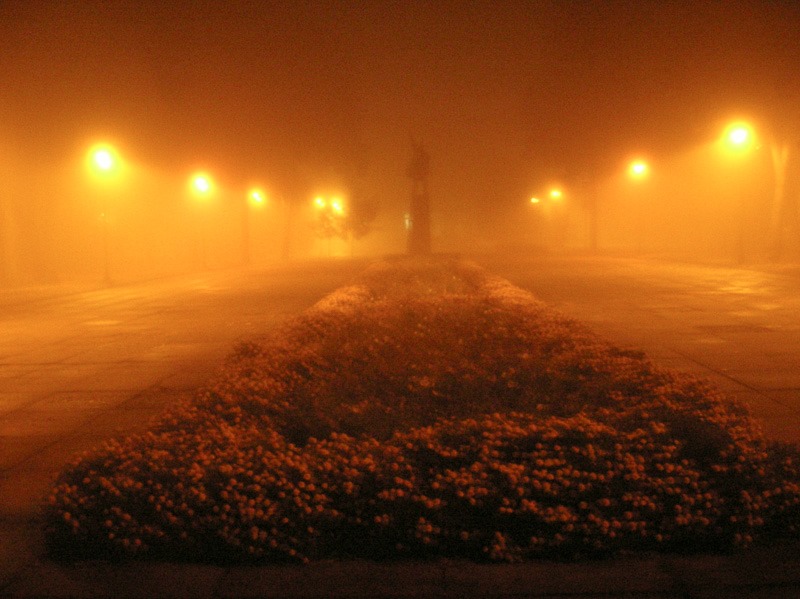 Lenin in the mist
Lenin in the mist
To say that it was easy to shoot at night would be a lie. The above shot is a handheld two second shot. No tripod or stand to lean on. Even more, that night had seen a fair quantity of vodka as well. It was misty and I needed some air, without the smell of vodka chasing me. At the time I never left the apartment without my camera. The statue is one of Lenin in the northern city of Konotop, Ukraine. It all looks fine, until you look at the picture at 1:1 and you can see that there is a fair bit of camera shake. the small flowers simply seem more plentiful.
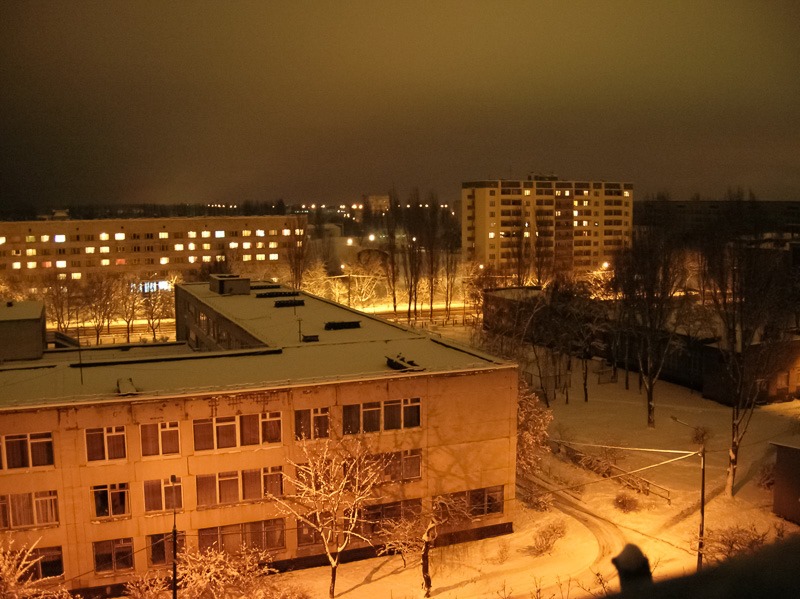 Point and Shoot at the night
Point and Shoot at the night
After that, I wanted to get more shots in the dark. From our balcony on the eighth floor, the night was always nice to see, but even more so when it had snowed a little and the night really lit up. But that is also where my capabilities of shooting at night ended. Anything that had to do with stars, star trails or even moon shots was doomed from the start. Those shots were simply not on the menu at the time.
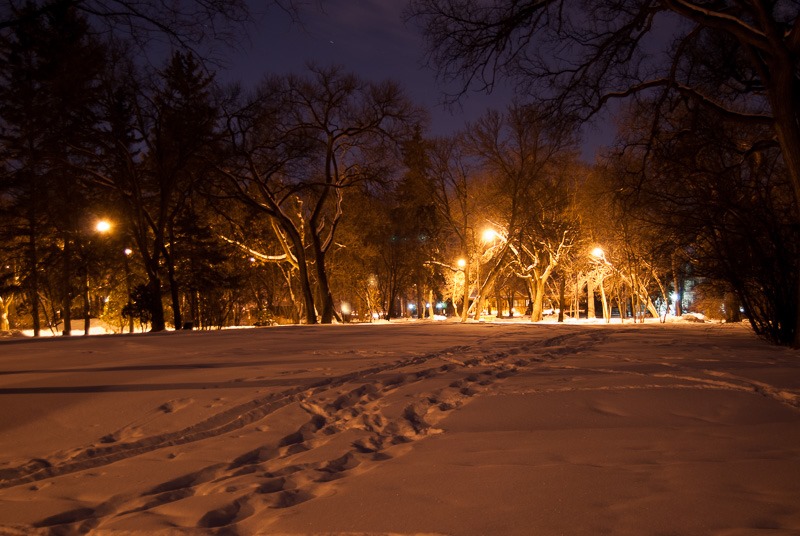 Munson Park, a first night shot with a new camera
Munson Park, a first night shot with a new camera
A few years later, I acquired a Nikon D40X, a 10 megapixel camera with a maximum ISO of 3200. Not that shooting at that setting would yield any usable pictures… Again, night shots that were fairly well lit were doable, but I had not tried anything more demanding with it.
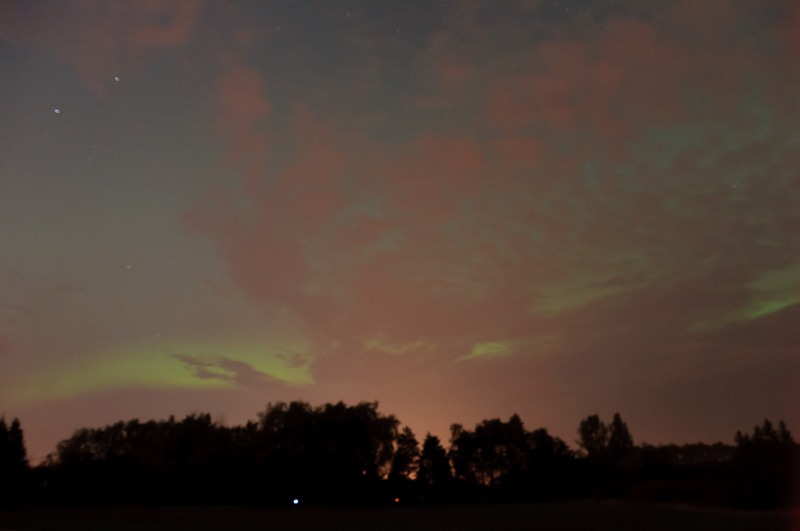 Blurry attempt at aurora
Blurry attempt at aurora
Until I got wind of Northern Lights for the first time. I just had to see and shoot them! Armed with the D40X and the 18-55 kit lens I went into Birds Hill Park and shot the aurora. The above picture was the best I got, the automatic AutoFocus system wreaked havoc on the focus. That doesn’t sound right, but I never experienced the fact that in the night, auto focus systems cannot be trusted. As a result, all my aurora shots were blurry, despite the tripod used. But at least I got some colour.
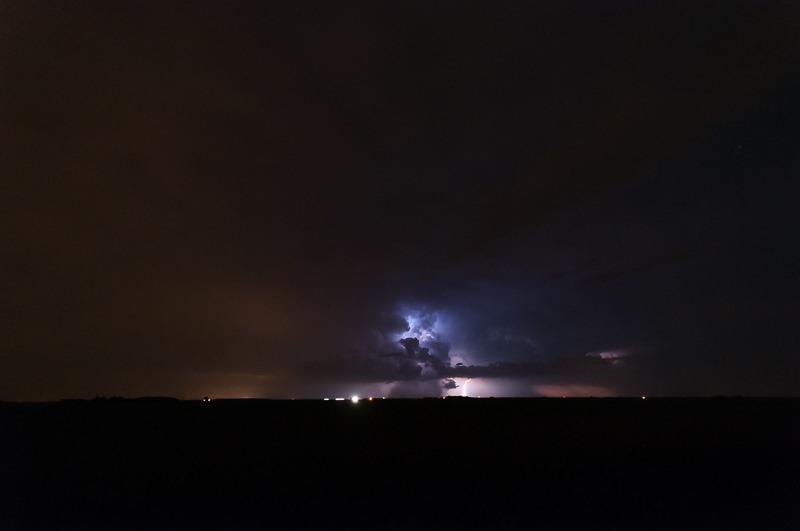 Animation in the sky
Animation in the sky
After that, well, the camera got a bit better (after the D40X fell with a heavy lens attached, it was destroyed). The next camera was a D90. That camera already had a way better noise level at higher ISOs and yielded perfectly usable pictures. Shooting thunderstorms in the night was a great experience. Not only because of the pictures, company also played a big role there.
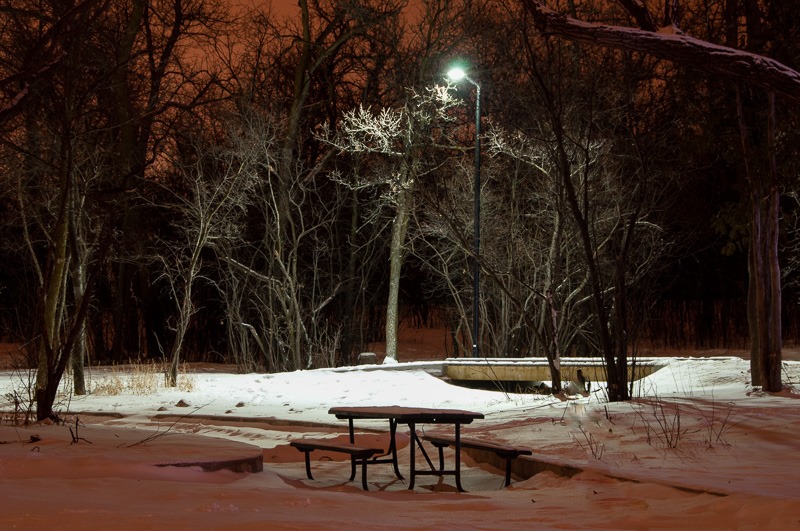 Serene scene
Serene scene
Little by little, my skills at shooting night pictures improved. Also because I stole a lot of ideas and settings ideas from others who were more advanced than me in the matter. One constant remained over time: the tripod was always a must. There is no hope of getting a decent shot without using a tripod. Even a flimsy one is better than nothing. I was already far away from my first “Lenin in the mist” shot of a few years earlier.
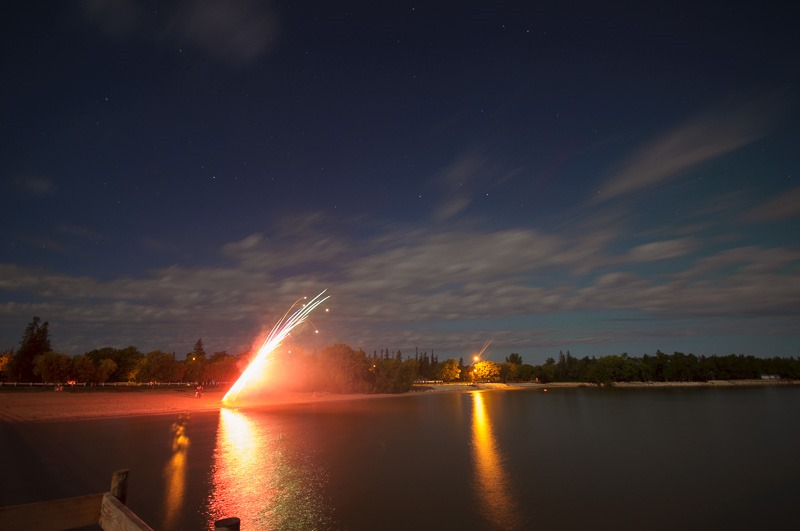 Impromptu fireworks
Impromptu fireworks
Then the aurora bug bit me again and when the “lights” were out, I simply had to get the pictures. Sometimes the lights delivered a show, other times (more often than I would have liked) they didn’t. So what to do when the clouds roll in, covering your precious green skies?
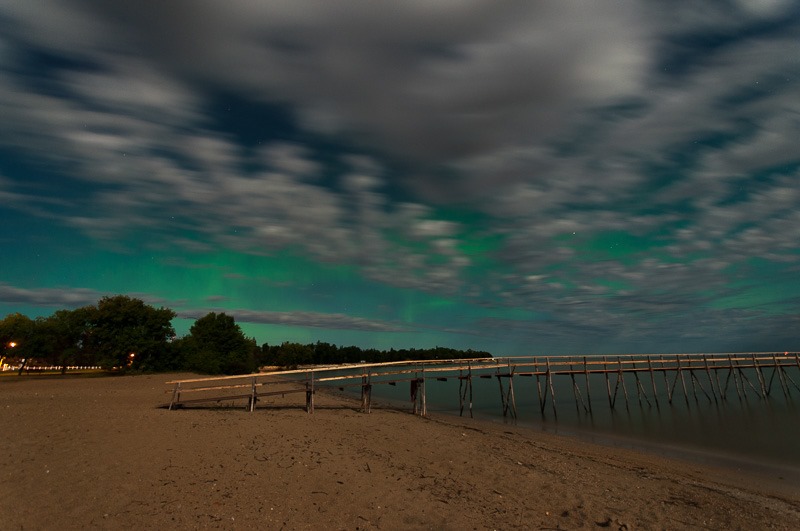 Aurora, clouds and moon shine
Aurora, clouds and moon shine
Shoot them, of course! And when the lights dim a bit too much to be shot properly, the fireworks, nicely lit over the water by some youngsters in a romantic mood made for a few nice shots. There was another challenge. Fireworks are notoriously hard to estimate, lighting wise. You never know what type of rocket comes next and you often end up under- or overexposing your shots. Sometimes even both.
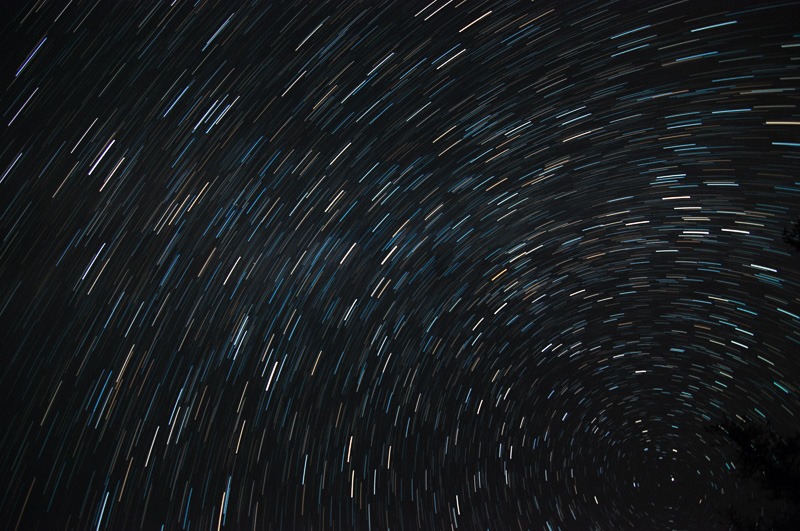 Attempt at star trails
Attempt at star trails
And then you have the nights where Northern Lights are “officially” promised. Without ever even showing a hint of green in the sky. The abundance of stars is well know in the world, so shooting just them is kind of, ehm, boring. Comes along Photoshop, where multiple exposures of the same night sky can be combined to form trails of the stars. You need a fair amount of shots for the trails to become visible and usable in a picture. It is always better to have hundreds of shots totalling up to a serious length in time, than to take a single shot for that same length. Your camera will always perform better with shorter shutter speeds like thirty seconds at a time.
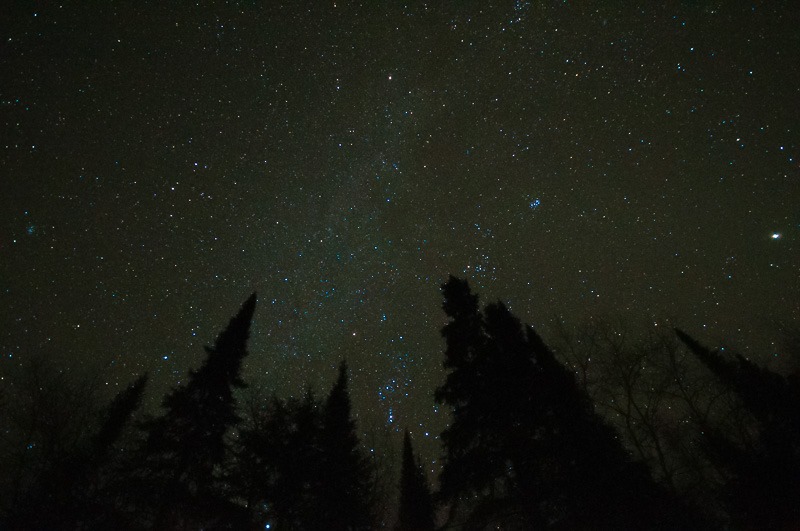 Looming Tall pines
Looming Tall pines
And when it is too cold to go and shoot hundreds of shots from the same vantage point, well, you do a single shot, pack up your gear and head back inside. The pine trees made for a somewhat interesting foreground, but didn’t add much to the shot. Lighting them up with my speed light at full blast was a mistake. The trees ended up washed out and the stars under exposed anyway. Not even good enough to show here.
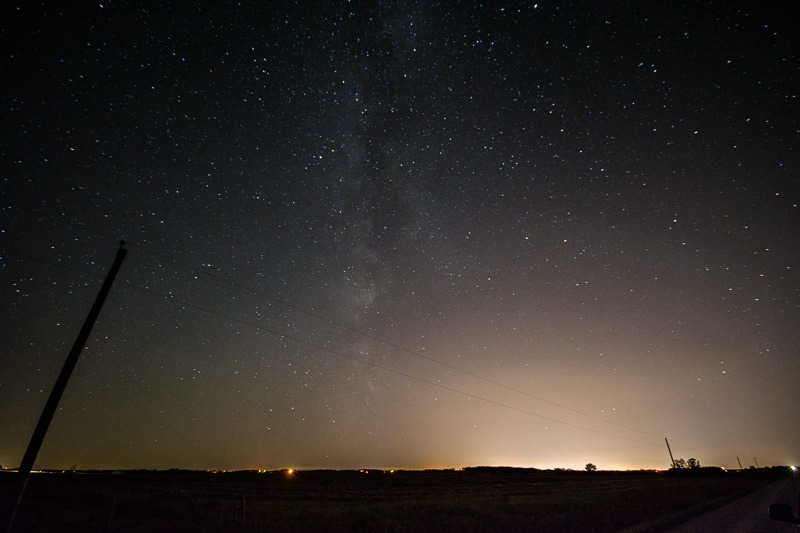 City glow, or light pollution
City glow, or light pollution
After lots and lots of trial and error sessions in the night, sometimes you can come up with a decent pictures, worth showing or even worth printing. Here, the sky was lit by the city of Winnipeg, we call that light pollution. Our ancestors never even knew what that meant. Today we have to move out of the city to avoid washed out skies in the night.
 Milky Way
Milky Way
Turning the camera away from the city is often a better idea. A hint of aurora together with the Milky Way is always a shot to be taken. Again, once this shot was finished, my hands started to shake from the cold wind, even if this one was taken in a warmer summer night.
As you can see, you need lots of practice to get decent night shots. Depending on your camera’s capabilities, you can opt for more complex shots. Every camera is capable of shooting in the night. The subject depends on the camera in that case. No use in shooting the Milky Way with your camera phone… Come to think of it, I should try that one day/night, just to see where I can take that camera. Who knows there might be some interesting shots waiting for me.
Until next time…
